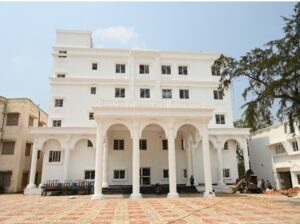By Navanit Samaiyar, CEO, Association of Skill Training Providers (ASTP):Today, almost every industry is witnessing change. Technology is altering processes and globalization is expanding our reach and the need to scale sustainably with speed and expertise. The skilling industry must align itself with these changing needs to ensure Indian industries are geared to cater to the demands of the market. And this applies to every job role/skill from basic plumbing, carpentry to AI and ML.
Apart from catering to the demands of “Skilling India”, the year 2018 has also witnessed major disruptions in terms of skill gaps and also seen sings of the future of skills in the upcoming year.
The key trends for 2019 reflect the challenge and opportunity for training partners to develop training modules that enable trainees to reach proficiency and filling the skill gaps – move from solving the employability problem in order to overcome the employment issues.
Skills in 2018
Skills in demand can be perceived from two perspectives, i.e. industry demands and youth demands. In outgoing year, the demands from the industry for skilled manpower have been mostly from the sectors like logistics, beauty and wellness, hospitality, tourism, retail, construction and IT. There’s also an overwhelming number of young manpower who continue to seek government job opportunities.
Skill Gaps
There is a distinct gap between the kind of manpower industry demands and the kind of jobs youth aspire for. In aggregation, number of people trained by the skill sector (inclusive of all Government schemes and private initiatives) outnumbers the demand generated by the employers. Opportunities offered are far less than the trained & certified skilled manpower produced each year. Since most of the skilling activities in the country are funded and run by the government, it doesn’t capture demands well enough from either side to ultimately increase employability among youth and reduce unemployment. A careful definition of skills needed and matching them with corresponding supply is critical to ensure long term sustained and aspirational engagement of students in the Industry.
The employers on their part have to create an aspirational environment to drive a headset change in the young population who are seeking specific skills beyond the existing graduation courses. They will need to build clear well-defined career progression – both vertical and horizontal – to ensure they attract long term sustainable skilled manpower who are not swayed by the desire for stability in a Government nor are dissuaded by the uncertainties of career progression in Private sector.
Filling the Gaps
Skills matching is a complex and dynamic process involving multiple stakeholders making multiple decisions at different times. From the present scenario of employment in the country, it is conspicuous that skills did not dominate the discourse in the market. The discussion over lack of jobs was on the table without addressing the demand led skill development. Undeniably, the supply led skills are not going to bridge the gap as skills required are specific and the skills delivered are very general. In order to fill the gaps, all dimensions must be kept in mind such as regional demands, youth aspirations and industry requirements. The ideal scenario of match between demand and supply will be when we can ensure low to no upskilling needed by the employers and their hires are independently productive from the moment the join their assignment.
It is also essential to put in place a robust LMIS (Labour Market Information System) to improve the information flow in the market. LMIS can be used for better matching of skills demand and supply. It provides advice and recommendations for policy- and decision‑makers on how to respond to market signals and how to react to early warning messages. Although the NSDA (National Skill Development Agency) has developed national LMIS (www.lmis.gov.in), the portal today is focused on the supply side and only on entry level jobs. It must a) focus on demand side in order that demand led skill development can be undertaken by training partners and b) ensure the entire lifecycle of skilled workers is captured in the system so there is visibility of all forms of labour.
Geographically, a cluster approach is required where local demand is captured, and skilled manpower can be linked to such available opportunities. Locally available or state specific jobs can create a greater pull and increase participation in training. Additionally, banking and finance regulatory mechanisms are required to be eased out to enable and encourage youth to take loans for either entrepreneurship initiatives or to get skilled. Loans structure should be promoted well so as to infuse aspirations among the youth for vocational education and skill development. Mentor network at the field level may help in the system to yield greater results from the Mudra Loan scheme.
Future of Skills
While traditional skills like beautician, electronics, textile, logistics etc. will continue to be in demand some new areas we hope to see are…
IT, digital and more technologically appealing skills that align with the Global demand. With technology moving more towards AI/ ML and Blockchain traditional areas of IT will need bolstering in order to ensure India’s IT industry continues to retain its pre-eminent Global position. With its large reach across all states of India through a network pf ~10000 NSDC partners alone, the skill training infrastructure can play a significant role in producing scale to cater to these requirements. In addition, the same infrastructure can be used for up-skilling existing IT professionals, data managers, data analytics and data processors. Industry, Nasscom, IT Sector Skill Council, Government bodies and Skill training institutes will have to work in unison to ensure we are ready for this new demand surge.
Finance and accounting is another growing sector among the youth given the formalization of the economy and larger tax base across industries.
Apprenticeship model and dual training model would pick up pace – it will be important the curriculum is as customized as possible to ensure immediate impact of the hires thus enhancing attractiveness of the program. This can even be extended to humanities graduates who spend time building their skills post graduation in a collaborative industry, training institute and policy makers initiative. Leveraging the German/ British etc. model will help kickstart this process
Overall there isn’t a more attractive time for the skilling industry. It will be critical all agencies work together to ensure there is consonance and unity of objectives – all focussed on a single goal of enhanced employability by bringing training curriculum and outcomes as close as possible to the employer needs. And align the production of skilled manpower to demand forecast and not a supply driven model.







